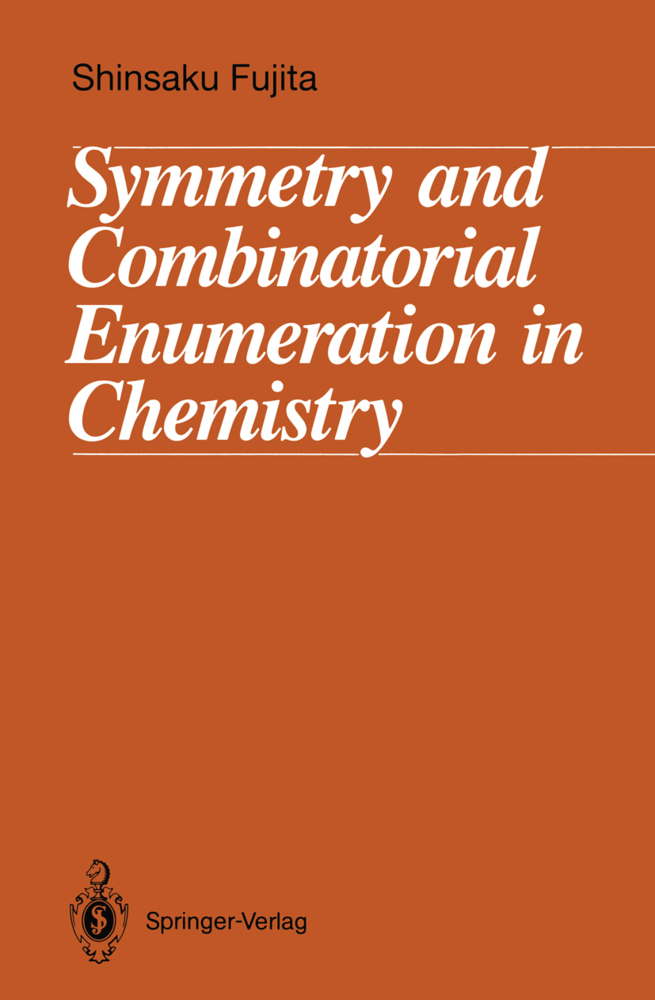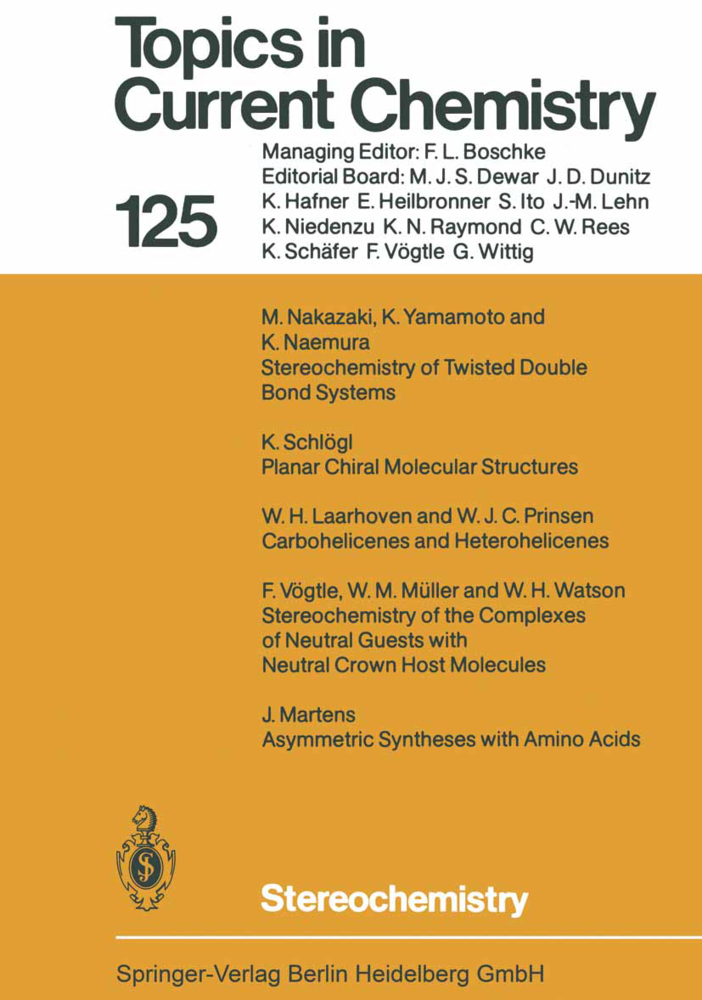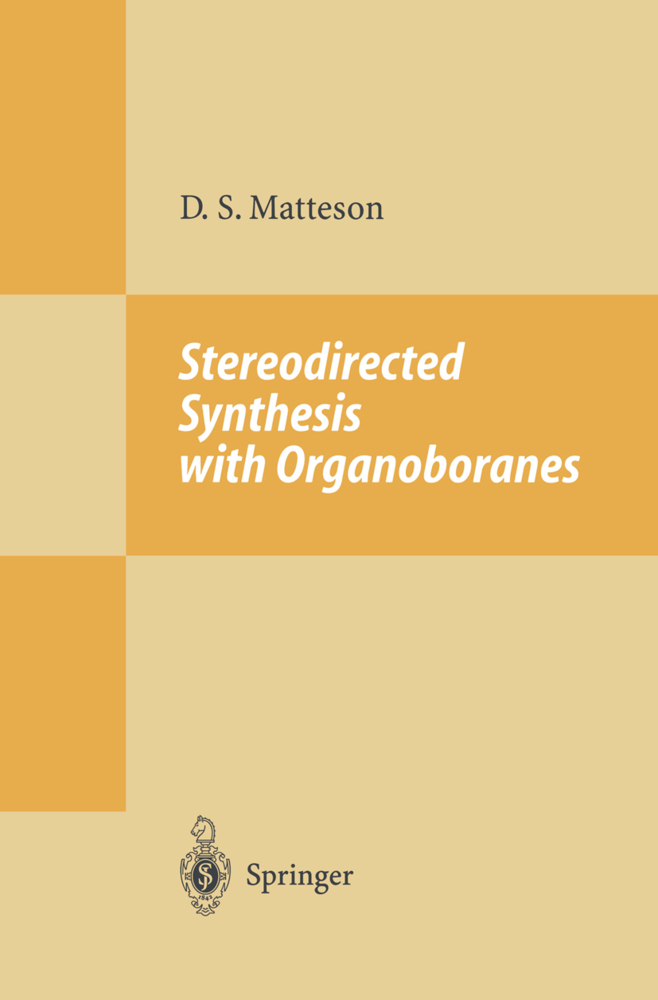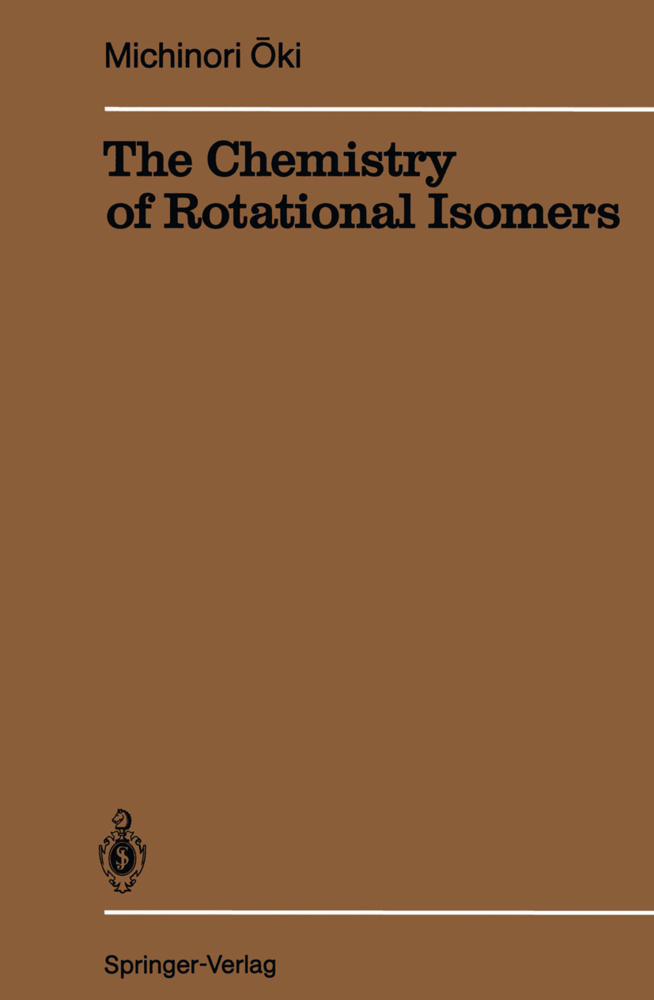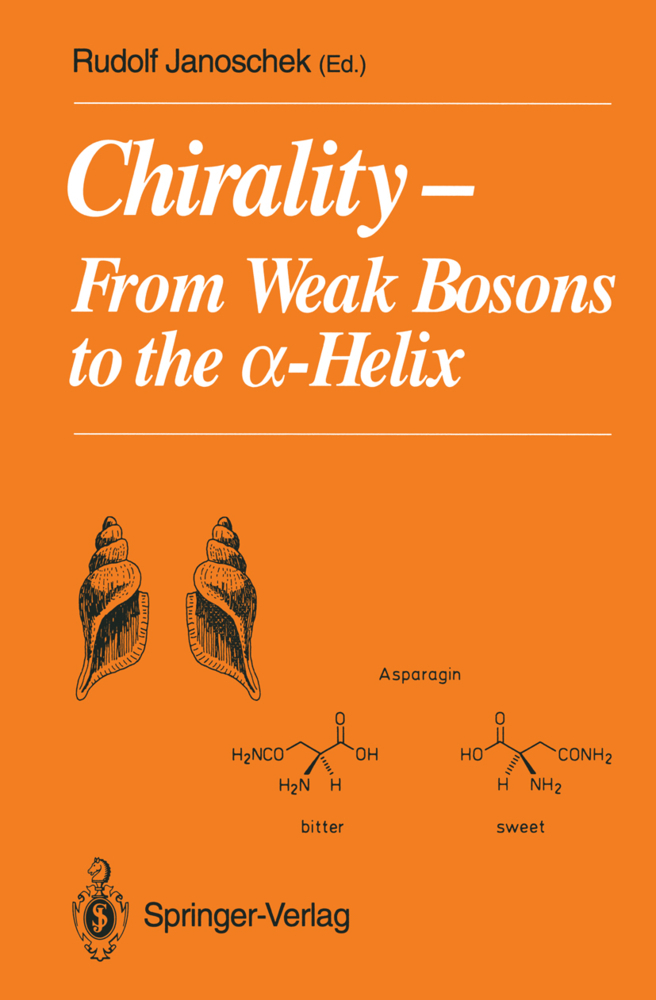Symmetry and Combinatorial Enumeration in Chemistry
Symmetry and Combinatorial Enumeration in Chemistry
Mit der Gruppentheorie führt der Autor Chemiestudenten in die Stereochemie ein. Er erklärt einheitlich und sehr verständlich stereochemische Probleme und die Methode der Abzählung chemischer Isomere.
1 Introduction
2 Symmetry and Point Groups2.1 Symmetry Operations and Elements
2.2 Conjugacy Glasses in Point Groups
2.3 Subgroups of Point Groups
2.4 Conjugate and Normal Subgroups of Point Groups
2.5 Non-Redundant Set of Subgroups for a Point Group
3 Permutation Groups
3.1 Permutations and Cycles
3.2 Permutation Groups
3.3 Transitivity and Orbits.
3.4 Symmetric Groups
3.5 Parity
3.6 Alternating Groups
4 Axioms and Theorems of Group Theory
4.1 Axioms and Multiplication Tables
4.2 Subgroups
4.3 Cosets
4.4 Equivalence Relations
4.5 Conjugacy Classes
4.6 Conjugate and Normal Subgroups
4.7 Subgroup Lattices
4.8 Cyclic Groups
5 Coset Representations and Orbits
5.1 Coset Representations
5.2 Transitive Permutation Representations
5.3 Mark Tables
5.4 Permutation Representations and Orbits
6 Systematic Classification of Molecular Symmetries
6.1 Assignment of Coset Representations to Orbits
6.2 SCR Notation
7 Local Symmetries and Forbidden Coset Representations
7.1 Blocks and Local Symmetries
7.2 Forbidden Coset Representations
8 Chirality Fittingness of an Orbit
8.1 Ligands
8.2 Behavior of Cosets on the Action of a CR
8.3 Chirality Fittingness of an Orbit
9 Subduction of Coset Representations
9.1 Subduction of Coset Representations
9.2 Subduced Mark Table
9.3 Chemical Meaning of Subduction
9.4 Unit Subduced Cycle Indices
9.5 Unit Subduced Cycle Indices with Chirality Fittingness
9.6 Desymmetrization Lattice
10 Prochirality
10.1 Desymmetrization of Enantiospheric Orbits
10.2 Prochirality
10.3 Further Desymmetrization of Enantiospheric Orbits
10.4 Chiral syntheses
11 Desymmetrization of Para-Achiral Compounds
11.1 Chiral Subduction of Homospheric Orbits
11.2 Desymmetrization of Homospheric Orbits
11.3 Chemoselective and Stereoselective Processes
12 Topicity and Stereogenicity
12.1 Topicity Based On Chirality Fittingness of an Orbit
12.2 Stereogenicity
13 Counting Orbits
13.1 The Cauchy-Frobenius Lemma
13.2 Configurations
13.3 The Pólya-Redfield Theorem
14 Obligatory Minimum Valencies
14.1 Isomer Enumeration under the OMV Restriction
14.2 Unit Cycle Indices
15 Compounds with Achiral Ligands Only
15.1 Compounds with Given Symmetries
15.2 Compounds with Given Symmetries and Weight
16 New Cycle Index
16.1 New Cycle Indices Based On USCIs
16.2 Correlation of New Cycle Indices to Pólya's Theorem
16.3 Partial Cycle Indices
17 Cage-Shaped Molecules with High Symmetries
17.1 Edge Strategy
17.2 Tricyclodecanes with Td and Its Subsymmetries
17.3 Use of Another Ligand-Inventory
17.4 New Type of Cycle Index
18 Elementary Superposition
18.1 The USCI Approach
18.2 Elementary Superposition
18.3 Superposition for Other Indices
19 Compounds with Achiral and Chiral Ligands
19.1 Compounds with Given Symmetries
19.2 Compounds with Given Symmetries and Weights
19.3 Compounds with Given Weights
19.4 Special Cases
19.5 Other Indices
20 Compounds with Rotatable Ligands
20.1 Rigid Skeleton and Rotatable Ligands
20.2 Enumeration of Rotatable Ligands
20.3 Enumeration of Non-Rigid Isomers
20.4 Total Numbers
20.5 Typical Procedure for Enumeration
21 Promolecules
21.1 Molecular Models
21.2 Proligands and Promolecules
21.3 Enumeration of Promolecules
21.4 Molecules Based on Promolecules
21.5 Prochiralities of Promolecules and Molecules
21.6 Concluding Remarks
22 Appendix A. Mark Tables
A.1 Td Point Group and Its Subgroups
A. 2 D3h Point Group and Its Subgroups
23Appendix B. Inverses of Mark Tables
B. 1 Td Point Group and Its Subgroups
B. 2 D3h Point Group and Its Subgroups
24 Appendix C. Subduction Tables
C. 1 Td Point Group and Its Subgroups
C. 2 D3h Point Group and Its Subgroups
25 Appendix D. Tables of USCIs
D. 1 Td Point Group and Its Subgroups
D. 2 D3h Point Group and Its Subgroups
26 Appendix E. Tables of USCI-CFs
E. 1 Td Point Group and Its Subgroups
E.2 D3h Point Group and Its Subgroups
27 Index.
Fujita, Shinsaku
| ISBN | 978-3-540-54126-4 |
|---|---|
| Medientyp | Buch |
| Copyrightjahr | 1991 |
| Verlag | Springer, Berlin |
| Umfang | IX, 368 Seiten |
| Sprache | Englisch |

